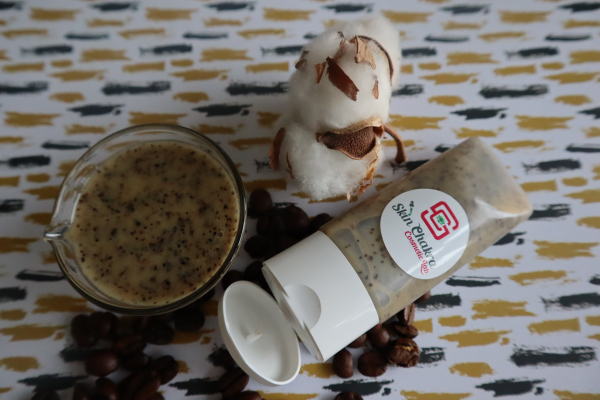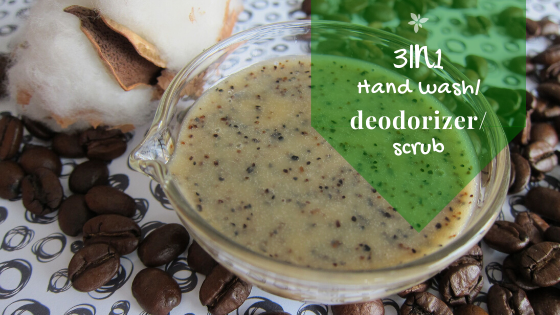I am probably the only chemist in the world who can not cook. But during and because of the pandemic, I tried to learn how to cook the basic.
The most unnerving part of cooking is the stinking (and sometimes stained) hands and fingers after working with beet root, onion, garlic and co. You know what I mean.
I decided to take the hybrid hand washing oleogel from the last tutorial to the next level and make it a after cooking deodorizer with scrub.
The star of the product are our cinnamon infused oil and coffee and cardamon extract. As you all know, coffee is not a deodorizer but neutralizes scents. Can you remember the life-before-pandemic and the time where we could easily sniff at a bottle of perfume in the drugstore or perfume shop? They put bowls and bottles of coffee on shelves so that you can reboot your nose after it is saturated with scents and can not take any new scents. Cardamon and cinnamon have the same effect and this is why I combined them in this hand wash.
To boost the cleansing (specially destaining) and deodorizing properties I made a scrub and added our brazil nut exfoliant to the product. You certainly can apply this product as a body exfoliant and wash or even as a facial wash but I designed it specifically for using in the kitchen. The procedure is very straightforward and very similar to the previous tutorial with the detailed video instruction. The key is the slow addition of phases together. If you don't do that you'll have a multi-phase mess at the end that you can not rescue anymore.
Formulation:
| Phase A |
|
| Sapogel Q |
20,0% |
| Glycerin |
5,0% |
| Phase B |
|
| Cinnamon infused oil |
51,4% |
| Tocopherol |
0,3% |
| Rosemary CO2 extract |
0,1% |
| Coffee CO2 extract |
1,0% |
| Cardamon CO2 extract |
0,2% |
| Phase C |
|
| Yucca extract |
3,0% |
| Decyl glucoside |
12,0% |
| Phase D |
|
| Brazil nut exfoliant |
7,0% |
| Phase E |
|
| Lactic acid 80% |
to adjust the pH |

Procedure:
1- Blend phase A, B and C separately in beakers.
2- Slowly add phase B to phase A. An overhead stirrer is perfect for this purpose but you can manage small quantities without any overhead stirrer. Blend completely before you add the next portion. This step is very important for the stability of the product.
3- After all of the oil phase is added to the sapogel phase slowly add the surfactant phase. Here as well, add the surfactant phase slowly and in small portions and blend before adding the next portion.
4- When all of the surfactant is added prepare a 10% dilution in water and measure the pH. (I forgot to do this and in the video you see that I measured the pH after adding the exfoliant. Measuring and adjusting before adding the exfoliant is easier)
As expected (because of decyl glucoside) the pH is high (7,33) and we need to reduce it. This is a self-preserving product and you don't have any preservative to take care of for pH adjustment but still we want a product with a skin friendly pH. I aimed for a pH between 4,5-5,0 and by adding lactic acid we reduced the pH to 4,9
5- Now you can add the exfoliant in small portions and gradually.
6- Take your stability samples and fill the rest in a suitable container. I prefer a pump bottle for an easy application.
This is a short video of what we did.
Stay safe and behappy


